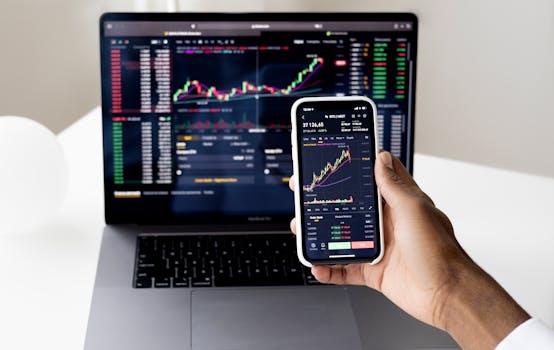
Beyond the Headlines: Unpacking the Nuances of Bitcoin Price Fluctuations
Remember that moment when you first saw a bitcoin price chart, a jagged line of peaks and valleys that seemed almost alive? For many of us, it’s a mix of awe, curiosity, and perhaps a touch of apprehension. The sheer volatility of bitcoin’s price often dominates the conversation, turning it into a headline-grabbing spectacle. But have we ever stopped to truly dissect what drives these dramatic shifts? Is the bitcoin price simply a reflection of market sentiment, or are there deeper, more intricate mechanisms at play that we often overlook?
This isn’t about predicting the next moonshot or crash. Instead, let’s embark on an exploratory journey, peeling back the layers to understand the multifaceted forces that sculpt the bitcoin price, encouraging us to think critically about what this digital asset truly represents.
The Scarcity Conundrum: More Than Just Digits
At its core, Bitcoin is designed with a hard cap of 21 million coins. This inherent scarcity is a foundational pillar of its value proposition, a stark contrast to the unchecked printing of fiat currencies. But how does this fixed supply interact with ever-growing demand?
When new bitcoins are mined, their rate of creation is predictable and halves approximately every four years – a process known as the halving. Each halving event effectively reduces the inflation rate of new supply. Historically, these events have often preceded significant price rallies, suggesting that the market anticipates this supply shock. However, the relationship isn’t always immediate or linear. It’s a fascinating dance between a finite asset and an evolving global appetite.
Network Effects and Adoption: The Crowd Pulls
Bitcoin’s value isn’t solely derived from its code or scarcity; it’s also a reflection of its network. The more people and institutions that adopt, use, and build on the Bitcoin network, the more valuable it becomes. This is the power of network effects, akin to social media platforms or communication technologies.
Consider the growing acceptance of Bitcoin by large corporations, payment processors, and even some nation-states. This institutional adoption signals a maturing asset class, moving beyond its early-adopter niche. Each significant endorsement can send ripples through the market, influencing investor confidence and, consequently, the bitcoin price. It’s a feedback loop: as adoption increases, the perceived utility and security of the network grow, attracting more users, which further strengthens the network, and so on.
The Shadowy Influence of Macroeconomics
It’s easy to get lost in the technicalities of blockchain, but we can’t ignore the elephant in the room: the global economic landscape. Inflationary pressures, interest rate decisions by central banks, geopolitical instability, and even major political events can have a profound impact on the bitcoin price.
In times of high inflation, some investors view Bitcoin as a potential hedge, a digital store of value that can outpace the devaluation of traditional currencies. Conversely, rising interest rates can make riskier assets, including cryptocurrencies, less attractive as safer investments like bonds offer better returns. Understanding these macroeconomic currents is crucial for a holistic view of bitcoin price movements.
Regulatory Winds: A Constant Variable
The regulatory environment surrounding cryptocurrencies remains a significant, and often unpredictable, factor. Governments worldwide are grappling with how to classify, tax, and regulate digital assets. Clarity brings a sense of legitimacy and can encourage institutional investment, often leading to positive price action.
However, uncertainty, or outright bans in certain jurisdictions, can spark fear and drive prices down. The narrative around regulation is constantly evolving, and it’s a variable that requires close observation. We’ve seen periods where anticipation of positive regulatory news boosted the bitcoin price, only for the actual outcome to be less impactful or even disappointing.
Sentiment, Speculation, and the Human Element
Let’s be honest: human psychology plays a colossal role. Fear, greed, FOMO (Fear Of Missing Out), and FUD (Fear, Uncertainty, and Doubt) are powerful drivers of market behavior, and Bitcoin is no exception. The cryptocurrency market is still relatively nascent and can be highly susceptible to narrative-driven movements.
Social media, news cycles, and prominent figures in the crypto space can amplify certain sentiments, leading to speculative bubbles or sharp corrections. It’s interesting to note how quickly a positive news story can ignite enthusiasm, and conversely, how a single tweet can trigger a cascade of selling. This emotional component, while often frustrating for long-term investors, is an undeniable force shaping the bitcoin price.
Wrapping Up: Your Next Step in Understanding
The bitcoin price is far more than a simple numerical readout; it’s a complex tapestry woven from scarcity, network adoption, macroeconomic forces, regulatory developments, and the ever-present human element of sentiment and speculation.
Therefore, rather than chasing predictions, focus on developing a diversified understanding. When you next see the bitcoin price fluctuate, ask yourself: which of these underlying forces might be at play? This inquisitive approach will serve you far better than any crystal ball.
